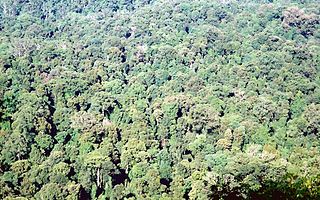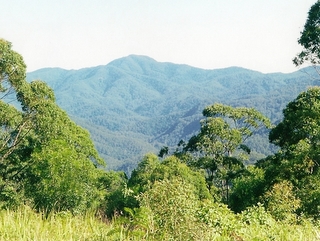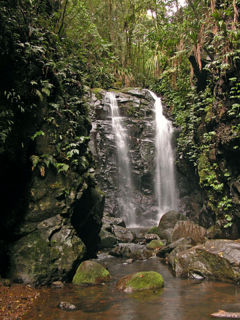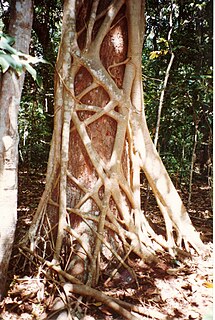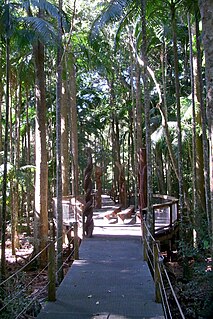| Tooloom National Park New South Wales | |
|---|---|
IUCN category II (national park) | |
Giant White Beech at Tooloom Scrub | |
| Nearest town or city | Urbenville |
| Coordinates | 28°26′47″S152°27′13″E / 28.44639°S 152.45361°E Coordinates: 28°26′47″S152°27′13″E / 28.44639°S 152.45361°E |
| Established | 22 December 1995 [1] |
| Area | 43.80 km2 (16.9 sq mi) [1] |
| Managing authorities | NSW National Parks & Wildlife Service |
| Website | Tooloom National Park |
| See also | Protected areas of New South Wales |
The Tooloom National Park is a protected national park located in the Northern Rivers region of New South Wales, Australia. The 4,380-hectare (10,800-acre) part is situated approximately 616 kilometres (383 mi) north of Sydney and 20 kilometres (12 mi) from the border town of Urbenville.

State parks are parks or other protected areas managed at the sub-national level within those nations which use "state" as a political subdivision. State parks are typically established by a state to preserve a location on account of its natural beauty, historic interest, or recreational potential. There are state parks under the administration of the government of each U.S. state, some of the Mexican states, and in Brazil. The term is also used in the Australian state of Victoria. The equivalent term used in Canada, Argentina, South Africa and Belgium, is provincial park. Similar systems of local government maintained parks exist in other countries, but the terminology varies.

A national park is a park in use for conservation purposes. Often it is a reserve of natural, semi-natural, or developed land that a sovereign state declares or owns. Although individual nations designate their own national parks differently, there is a common idea: the conservation of 'wild nature' for posterity and as a symbol of national pride. An international organization, the International Union for Conservation of Nature (IUCN), and its World Commission on Protected Areas (WCPA), has defined "National Park" as its Category II type of protected areas.

Northern Rivers is the most north-easterly region of the Australian state of New South Wales, located between 590 kilometres (370 mi) and 820 kilometres (510 mi) north of the state capital, Sydney, and encompasses the catchments and fertile valleys of the Clarence, Richmond and Tweed rivers. It extends from Tweed Heads in the north to the southern extent of the Clarence river catchment which lies between Grafton and Coffs Harbour, and includes the main towns of Tweed Heads, Byron Bay, Ballina, Kyogle, Lismore, Casino and Grafton. At its most northern point, the region is 102 kilometres (63 mi) south south–east of the Queensland capital, Brisbane.
Contents
The park is part of the Focal Peak Group World Heritage Site Gondwana Rainforests of Australia inscribed in 1986 [2] and added to the Australian National Heritage List in 2007. [3]

A World Heritage Site is a landmark or area which is selected by the United Nations Educational, Scientific and Cultural Organization (UNESCO) as having cultural, historical, scientific or other form of significance, and is legally protected by international treaties. The sites are judged important to the collective interests of humanity.
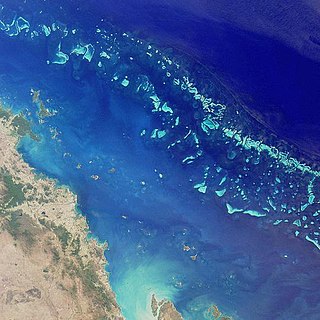
The Australian National Heritage List is a heritage register, a list of national heritage places deemed to be of outstanding heritage significance to Australia. The list includes natural, historic and indigenous places. Once on the National Heritage List the provisions of the Environment Protection and Biodiversity Conservation Act 1999 apply.
The name Tooloom is derived from Bundjalung word Duluhm meaning headlice, [4] referring to the Tooloom Falls. [5]











